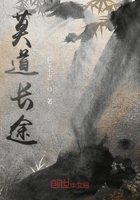"I have come three thousand miles to see the mullein cultivated in a garden, and christened the velvet plant," says John Burroughs in "An October Abroad." But even in England it grows wild, and much more abundantly in Southern Europe, while its specific name is said to have been given it because it was so common in the neighborhood of Thapsus; but whether the place of that name in Africa, or the Sicilian town mentioned by Ovid and Virgil, is not certain.Strange that Europeans should labor under the erroneous impression that this mullein is native to America, whereas here it is only an immigrant from their own land.Rapidly taking its course of empire westward from our seaports into which the seeds smuggled their passage among the ballast, it is now more common in the Eastern States, perhaps, than any native.
Forty or more folk-names have been applied to it, mostly in allusion to its alleged curative powers, its use for candlewick and funeral torches in the Middle Ages.The generic title, first used by Pliny, is thought to be a corruption of Barbascum = with beards, in allusion to the hairy filaments, or, as some think, to the leaves.
Of what use is this felt-like covering to the plant? The importance of protecting the delicate, sensitive, active cells from intense light, draught, or cold, have led various plants to various practices; none more common, however, than to develop hairs on the epidermis of their leaves, sometimes only enough to give it a downy appearance, sometimes to coat it with felt, as in this case, where the hairs branch and interlace.Fierce sunlight in the exposed, dry situations where the mullein grows; prolonged drought, which often occurs at flowering season, when the perpetuation of the species is at stake; and the intense cold which the exquisite rosettes formed by year-old plants must endure through a winter before they can send up a flower-stalk the second spring - these trials the well-screened, juicy, warm plant has successfully surmounted through its coat of felt.
Hummingbirds have been detected gathering the hairs to line their tiny nests.The light, strong stalk makes almost as good a cane as bamboo, especially when the root end, in running under a stone, forms a crooked handle.Pale country beauties rub their cheeks with the velvety leaves to make them rosy.
MOTH MULLEIN
(Verbascum Blattaria) Figwort family Flowers - Yellow, or frequently white, 5-parted, about 1 in.
broad, marked with brown; borne on spreading pedicles in a long, loose raceme; all the filaments with violet hairs; 1 protruding pistil.Stem: Erect, slender, ******, about 2 ft.high, sometimes less, or much taller.Leaves: Seldom present at flowering time;oblong to ovate, toothed, mostly sessile, smooth.
Preferred Habitat - Dry, open wasteland; roadsides, fields.
Flowering Season - June-November.
Distribution - Naturalized from Europe and Asia, more or less common throughout the United States and Canada.
Quite different from its heavy and sluggish looking sister is this sprightly, slender, fragile-flowered mullein."Said to repel the cockroach (Blatta).hence the name Blattaria; frequented by moths, hence moth mullein." (Britton and Brown's "Flora.") Are the latter frequent visitors? Surely there is nothing here to a moth's liking.New England women used to pack this plant among woolen garments in summer to keep out the tiny clothes moths.The flower, whose two long stamens and pistil protrude as from the great mullein's blossom, and whose filaments are tufted with violet wool footholds - unnecessary provisions for moths, which rarely alight on any flower, but suck with their wings in motion - are cross-fertilized by pollen-collecting bees and flies as described in the account of the great mullein.
"Of beautiful weeds quite a long list might be made without including any of the so-called wild flowers," says John Burroughs."A favorite of mine is the little moth mullein that blooms along the highway, and about the fields, and maybe upon the edge of the lawn." Even in winter, when the slender stem, set with round brown seed-vessels, rises above the snow, the plant is pleasing to the human eye, as it is to that of hungry birds.
BUTTER-AND-EGGS; YELLOW TOAD-FLAX; EGGS-AND-BACON; FLAXWEED;BRIDEWEED
(Linaria Linaria; L.vulgaris of Gray) Figwort family Flowers - Light canary yellow and orange, 1 in.long or over, irregular, borne in terminal, leafy-bracted spikes.Corolla spurred at the base, 2-lipped, the upper lip erect, 2-lobed; the lower lip spreading, 3-lobed, its base an orange-colored palate closing the throat; 4 stamens in pairs within; 1 pistil.Stem: 1to 3 ft.tall, slender, leafy.Leaves: Pale, grass-like.
Preferred Habitat - Wasteland, roadsides, banks, fields.
Flowering Season - June-October.
Distribution - Nebraska and Manitoba, eastward to Virginia and Nova Scotia.Europe and Asia.
An immigrant from Europe, this plebeian perennial, meekly content with waste places, is rapidly inheriting the earth.Its beautiful spikes of butter-colored cornucopias, apparently holding the yolk of a diminutive Spanish egg, emit a cheesy odor, suggesting a close dairy.Perhaps half the charm of the plant consists in the pale bluish-green grass-like leaves with a bloom on the surface, which are put forth so abundantly from the sterile shoots.(See blue toad-flax.)Guided by the orange palate pathfinder to where the curious, puzzling flower opens, the big velvety bumblebee alights, his weight depressing the lower lip until a comfortable entrance through the gaping mouth is offered him.In he goes, and his long tongue readily reaches the nectar in the deep spur, while his back brushes off pollen from the stamens in his way overhead.















